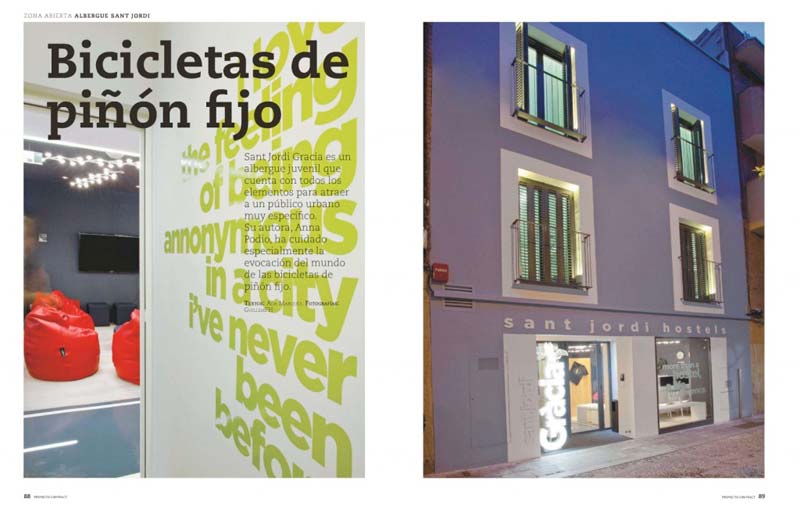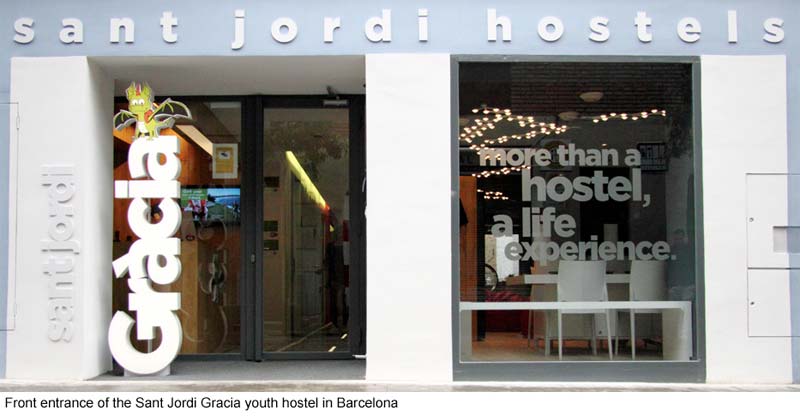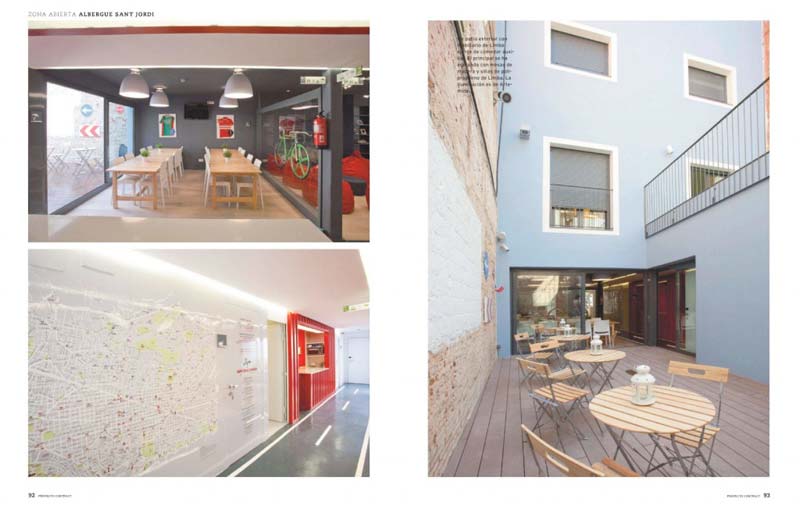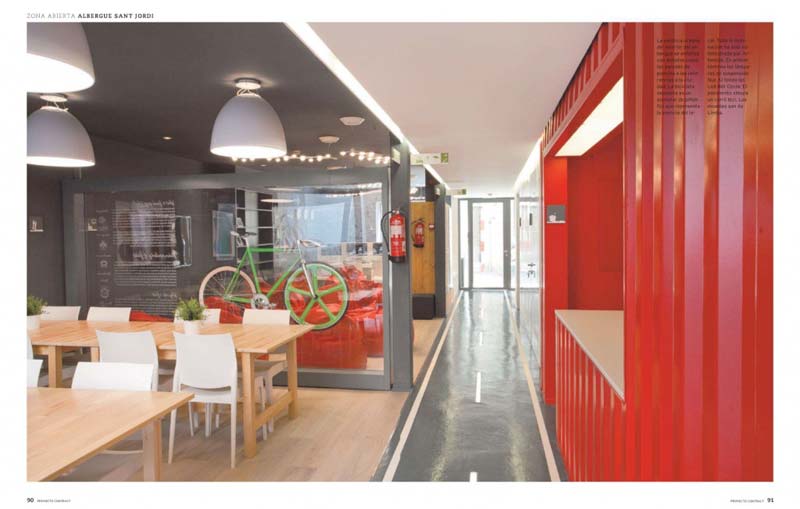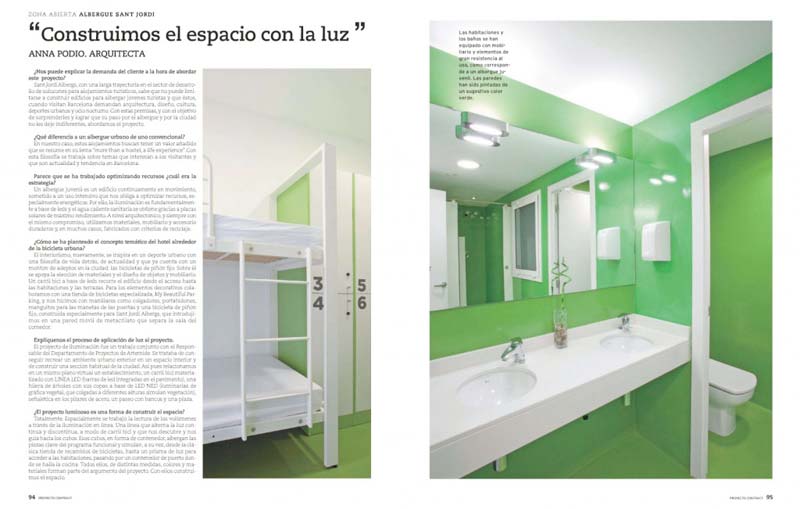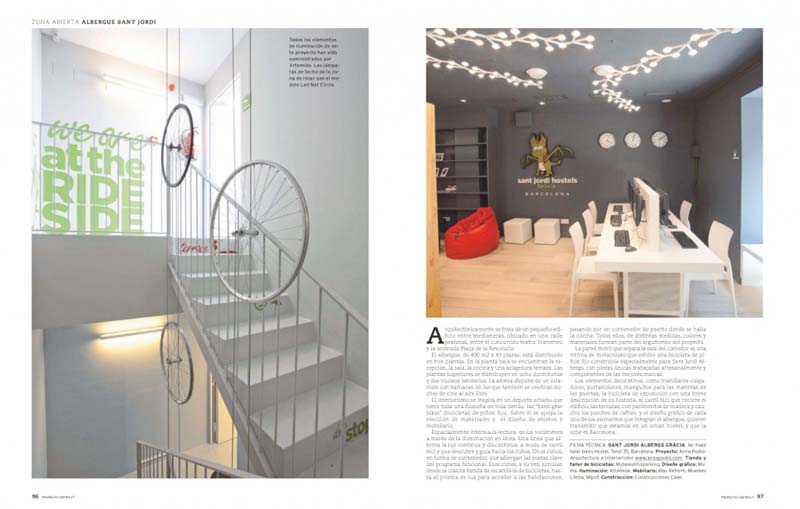Sant Jordi Hostels’ Sant Jordi Hostel Gracia hostel in Barcelona was recently featured in Proyecto Contract – a Spanish magazine for professionals, that deals with interior design, architecture, housing and general design issues for hotels, offices and commercial spaces.
In the article, various design and architectural elements that make Sant Jordi Hostel Gracia noteworthy are discussed by architect, Anna Podio, who designed and coordinated the construction and decoration of the hostel. Highlighting some of the key features of the hostel’s design, Mrs. Podio provides enlightened insights into her architectural vision and how she transformed it into a working reality.
Through a question and answer format, the article sheds light on Sant Jordi Hostels’ concern to fulfill the expectations and wishes of their guests, their desire to create a high quality youth hostel environment with a unique character and top installations as well as Anna Podio’s architectural vision and how she transformed her vision into an amazing experience for young travelers visiting Barcelona.
Here’s a brief translation of a portion of the question and answer section with architect, Anna Podio:
(text translated from the original Spanish; excerpt from the magazine Proyecto Contract, edition #88)
“We build the space with the light”
Proyecto Contract: Can you explain the demand of the client at the moment of tackling the project?
Anna Podio: Sant Jordi Hostels, with a long track record in the development of solutions for the accommodation of tourists, knows that you cannot limit yourself to constructing buildings for the housing of young tourists and that when they visit Barcelona they demand architecture, design, culture, urban sports and nightlife. With these premises and the objective to surprise them and achieve the goal that their journey through the hostel and the city doesn’t leave them indifferent, we engage the project.
Proyecto Contract: What is the difference between an Urban Hostel and a conventional one?
Anna Podio: In our case, these accommodations seek to have an added value that is summarized in their motto “more than a hostel, a life experience”. With this philosophy it works on issues that interest the visitors and are the current trend in Barcelona.
Proyecto Contract: It appears that you have worked to optimize resources. What was the strategy?
Anna Podio: A youth hostel is a building in continuous motion, submitted to intensive use that requires us to optimize resources, especially energy. Therefore, the lighting is primarily through LEDs and the hot water is obtained by use of maximum performance solar panels. At an architectural level, and always with the same commitment, we use materials, furniture and accessories that are durable and are often made according to recyclable criteria.
Proyecto Contract: How did it occur that the conceptual theme of the hostel came to be centered around the urban bicycle?
Anna Podio: The interior, again, is inspired by an urban sport with a life philosophy, past and current, and that has a lot of supporters in the city: the fixed gear bicycle. That foundation determined the choice of materials, design objects and furniture. A bike lane based on LEDs runs throughout the building, from the entrance to the bedrooms and terraces. For the decorative elements we collaborated with a specialized bike shop, My Beautiful Parking, and we made handlebars into hangers, water bottle holders, hand grips for the door handles and a fixed gear bicycle, built specially for Sant Jordi Hostels, that we placed in a mobile wall made of Plexiglas that separates the TV/chill-out room from the dining area.
Proyecto Contract: Explain to us the process of application of light to the project.
Anna Podio: The project of illumination was a job together with the head of the department of projects for Artemide. The idea was to recreate an exterior, urban environment in an interior space and to build a regular feature of the city. Thus we relate in the same visual plane an establishment, a bike lane made from LINEA LED (LED stripes embedded in the pavement), a row of trees with their tops based on LED NED (graphically plant-like lights, that when hung at varying heights simulate vegetation), signs in street pillars, a walkway with benches and a plaza.


